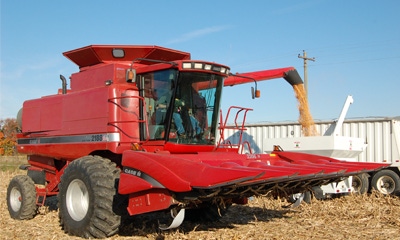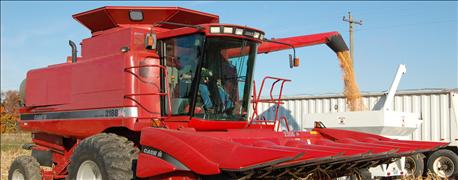
You were counting on having new soil test results before figuring out fertilizer rates for fall application. But now, your soils consultant won’t get to all your fields in time. How can you still arrive at reasonable fertilizer rates?
Brian Shrader, accounts manager for DuPont Pioneer, Marion, suggests asking these six questions:
1. What has been your soil fertility program in the past? This may come down to a field-by-field situation. No single approach fits all farming operations or individual farms when developing fertilizer recommendations.

CALCULATE REMOVAL: One way to zero in on how much fertilizer to apply is to determine how many pounds of nutrients you removed in the grain.
2. Have you applied nutrients using a crop feeding strategy? If you have, then you’ve applied nutrients in amounts needed to produce a predetermined yield level.
3. Have you achieved yield goals? Maybe you’ve exceeded yield goals. Either way, you need to know how yields have fared.
4. Have you followed a removal rate strategy instead? In this case, you’ve likely tried to put back only the nutrients your crops should have removed.
5. What can you learn from past soil sample results on each field? Determine if field levels of phosphorus and potassium were adequate, or if you have been working to build soil test levels. Prioritize fields that tested low last time or that have produced exceptional yields to be sampled first. Farms testing on the higher side or at sufficient levels might be candidates for a crop feeding strategy.
6. Is the ground on a long-term lease, is it ground you own, or is it land you may only be farming for a short time? The status of your farm lease agreement will affect your nutrient application strategy.
About the Author(s)
You May Also Like




